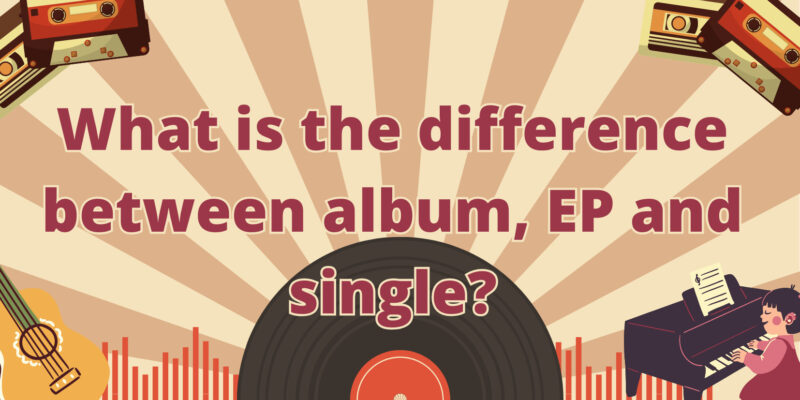In the world of music, artists release their work in various formats, each with its own characteristics and purpose. Understanding the differences between albums, EPs (Extended Plays), and singles is essential for both artists and music enthusiasts. In this article, we’ll explore the distinctions among these musical formats and their significance in the industry.
**Single: A Snapshot of Sound**
A single is the most concise and straightforward of the three formats. It typically consists of one to three songs and serves as a snapshot of an artist’s work. Here are the key features of singles:
– **Length:** Singles are short and typically contain a single track, accompanied by one or two additional songs, known as B-sides.
– **Purpose:** Singles are often used as a teaser or promotional tool for an upcoming album or EP. They provide a taste of an artist’s sound, generating anticipation for a larger release.
– **Release Frequency:** Singles can be released frequently, sometimes as standalone tracks between albums or EPs, helping artists maintain their presence in the music scene.
– **Popularity:** Radio stations, streaming platforms, and music videos frequently feature singles due to their accessibility and potential for radio airplay.
**EP (Extended Play): A Compact Musical Journey**
An EP is a format that falls between a single and an album in terms of length and content. EPs offer artists more room for creativity and exploration compared to singles. Here are the key features of EPs:
– **Length:** EPs typically contain more songs than singles but are shorter than full-length albums. They generally consist of four to six tracks, although the number can vary.
– **Purpose:** EPs allow artists to delve deeper into their musical themes, experiment with different styles, or showcase a specific collection of songs that share a common thread.
– **Coherence:** EPs often have thematic or stylistic coherence, with the tracks connecting to form a more substantial narrative or musical statement.
– **Release Frequency:** Artists may release EPs as standalone projects or as precursors to a full-length album. They provide a more substantial body of work compared to singles.
**Album: A Complete Artistic Statement**
Albums are the most comprehensive and significant musical format. They provide artists with the space to create a complete and immersive artistic statement. Here are the key features of albums:
– **Length:** Albums are the longest of the three formats, typically containing eight or more tracks. They can range from around 30 minutes to over an hour in duration.
– **Purpose:** Albums allow artists to explore complex themes, tell stories, and fully showcase their creative vision. They often represent a significant milestone in an artist’s career.
– **Coherence:** Albums are known for their thematic and stylistic coherence. The tracks are carefully sequenced to create a flow and narrative that ties the entire work together.
– **Release Frequency:** Albums are typically released less frequently than singles or EPs due to their size and complexity. They often require more time for production and promotion.
**Conclusion: A Diverse Musical Landscape**
In the ever-evolving music industry, artists have the freedom to choose the format that best suits their creative goals and audience engagement strategies. Whether it’s the concise snapshot of a single, the creative exploration of an EP, or the immersive experience of an album, these formats collectively contribute to the diverse and vibrant musical landscape we enjoy today. Each format serves a unique purpose, allowing artists to connect with their audience in different ways and express their artistry to the fullest.


